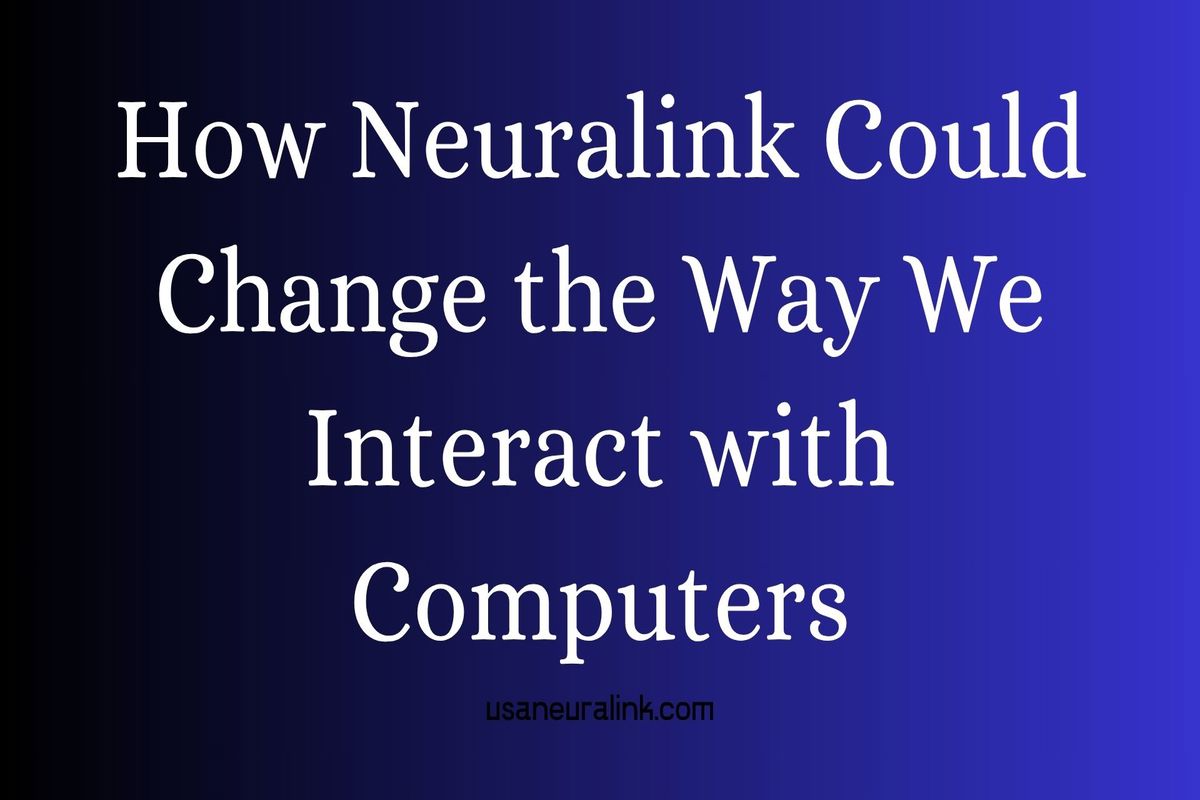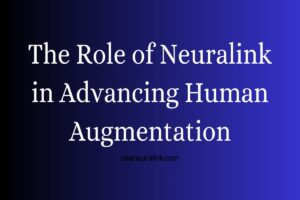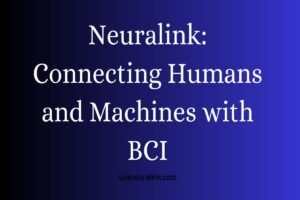Neuralink’s Contribution to the AI Revolution
Introduction
The intersection of human cognition and artificial intelligence (AI) is no longer a distant sci-fi dream but a tangible reality being shaped by companies like Neuralink. Founded by Elon Musk in 2016, Neuralink is pioneering brain-computer interface (BCI) technology, aiming to create a seamless connection between the human brain and digital systems. This blog explores how Neuralink’s innovations are revolutionizing AI, enhancing human capabilities, transforming industries, and raising critical ethical questions. By bridging the gap between biology and technology, Neuralink is poised to redefine what it means to be human in an AI-driven world.
What is Neuralink?
Neuralink is a neurotechnology company developing implantable brain-computer interfaces. Its flagship device, the “Link” (also called Telepathy N1), is a coin-sized implant embedded in the brain to translate neural activity into digital signals. The device uses ultra-thin threads with over 1,000 electrodes to capture and transmit brain signals wirelessly via Bluetooth, enabling users to control external devices like computers or smartphones through thought alone. The company’s mission is twofold: to address unmet medical needs, such as restoring mobility for those with paralysis, and to unlock human potential by fostering a symbiotic relationship with AI.
Neuralink’s technology builds on decades of BCI research but stands out due to its high-bandwidth approach and minimally invasive surgical techniques. A custom-designed surgical robot implants the device with precision, minimizing damage to brain tissue. As of 2025, Neuralink has successfully implanted its device in human patients, with early trials showing promising results in enabling thought-controlled actions, such as moving a computer cursor or playing video games.
Medical Breakthroughs: Restoring Autonomy
One of Neuralink’s most immediate contributions to the AI revolution is its potential to transform medical treatment for neurological disorders. The company’s clinical trials, including the PRIME (Precise Robotically Implanted Brain-Computer Interface) and CONVOY studies, focus on individuals with quadriplegia due to spinal cord injuries or amyotrophic lateral sclerosis (ALS). By interpreting neural signals from the motor cortex, Neuralink’s implant allows patients to control digital devices or assistive technologies like robotic arms without physical movement.
For example, the first human recipient, Noland Arbaugh, a paraplegic, used the Link to browse the internet, play video games, and move a cursor on his laptop by thinking. The second patient, Alex, designed 3D objects and played Counter-Strike 2, a game requiring complex inputs, using only his mind. A third patient, Brad Smith, an ALS patient, became the first non-verbal individual to use the implant to type and edit videos, significantly improving his communication capabilities. These milestones demonstrate how Neuralink’s technology, combined with AI algorithms, can decode neural patterns to restore independence and enhance quality of life for those with severe disabilities.
Beyond motor function, Neuralink’s technology holds promise for treating conditions like Parkinson’s disease, epilepsy, and depression. By targeting specific brain regions, the implant could enable neurostimulation to regulate mood or reduce symptoms without the side effects of traditional medications. For instance, future applications might address mental health conditions like anxiety or PTSD by stimulating areas involved in mood regulation, offering a novel alternative to conventional therapies. This integration of AI-driven neural analysis with medical treatment is a game-changer, leveraging machine learning to interpret complex brain signals in real time.
Enhancing Human Cognition and AI Symbiosis
Neuralink’s ambitions extend beyond medical applications to a broader vision of human-AI symbiosis. Elon Musk has articulated a long-term goal of merging human cognition with artificial intelligence to keep pace with rapidly advancing AI systems. As AI continues to outstrip human processing capabilities, Neuralink’s high-bandwidth interface could enable humans to interact with digital systems at unprecedented speeds, effectively augmenting cognitive abilities.
Imagine a future where individuals can access information, perform calculations, or communicate ideas as quickly as a computer processes data. Neuralink’s implant could allow users to interface directly with AI assistants, bypassing traditional input methods like keyboards or voice commands. This could revolutionize productivity, enabling professionals to retrieve data, analyze complex problems, or even create art through thought alone. For example, artists could visualize and manipulate digital landscapes in real time, while engineers could design intricate systems without lifting a finger.
This symbiosis also raises the possibility of enhancing memory, learning, and decision-making. By storing and retrieving neural data, Neuralink’s technology could, in theory, augment memory recall or accelerate learning by directly interfacing with educational AI systems. While these applications are still speculative, they align with Musk’s vision of preventing humans from becoming obsolete in an AI-dominated future. Neuralink’s ability to record and stimulate brain activity could also pave the way for advanced neuroprosthetics, such as restoring vision through its Blindsight device, which received FDA Breakthrough Device designation for its potential to treat blindness.
Transforming Industries Beyond Healthcare
Neuralink’s technology is not limited to medical or cognitive applications; it has the potential to disrupt industries like transportation, logistics, and entertainment. In the trucking and supply chain sector, for instance, Neuralink could enhance driver efficiency by integrating brain signals with AI-driven navigation systems. Drivers could control vehicle functions, monitor routes, or communicate with dispatch systems through thought, reducing reaction times and improving safety. This integration of human intuition with AI precision could streamline operations, optimize fuel efficiency, and reduce human error in high-stakes environments.
In entertainment, Neuralink’s BCI could redefine gaming and virtual reality. Players like Alex, who used the implant to play Counter-Strike 2, demonstrate the potential for immersive experiences where users control avatars or environments with their minds. This could lead to new genres of gaming that blur the line between thought and action, creating unparalleled levels of engagement. Similarly, in creative industries, Neuralink could enable artists, musicians, and filmmakers to translate their visions directly into digital formats, bypassing traditional tools and accelerating the creative process.
Ethical and Societal Implications
While Neuralink’s contributions to the AI revolution are groundbreaking, they come with significant ethical and societal challenges. One major concern is privacy. The Link records neural activity, raising questions about who owns and controls this data. Brain signals, which encode thoughts and intentions, are deeply personal, and unauthorized access could lead to unprecedented violations of privacy. Robust encryption and transparent data policies will be critical to addressing these concerns.
Accessibility is another issue. Neuralink’s technology is expensive to develop and implement, and there’s a risk it could exacerbate socioeconomic divides. If only the wealthy can afford cognitive enhancements or life-changing medical treatments, Neuralink could widen the gap between the privileged and the underserved. Ensuring equitable access will require collaboration between governments, regulators, and the private sector.
Ethical concerns also surround Neuralink’s development process. The company has faced scrutiny for its animal testing practices, with reports of approximately 1,500 animal deaths since 2018 and ongoing federal investigations into animal welfare violations. These controversies highlight the need for transparency and ethical oversight in neurotechnology development. Additionally, the long-term safety of brain implants remains uncertain. Risks like seizures, infections, or device rejection by the body could pose significant challenges, particularly as Neuralink scales its trials.
The broader societal impact of Neuralink’s vision—merging humans with AI—raises philosophical questions about identity and autonomy. If humans can enhance their cognition or integrate with machines, what does it mean to be human? Critics argue that widespread adoption of BCI technology could lead to a loss of individuality or create pressure to “upgrade” to remain competitive in an AI-driven world. These concerns underscore the need for public discourse and regulatory frameworks to guide the responsible development of neurotechnology.

The Road Ahead for Neuralink
Neuralink’s journey is still in its early stages, but its progress is undeniable. With $650 million in funding raised in 2025 and FDA approval for human trials, the company is well-positioned to expand its clinical studies and refine its technology. The success of early patients like Noland Arbaugh, Alex, and Brad Smith demonstrates the transformative potential of Neuralink’s implants, particularly for those with disabilities. Ongoing trials, such as the CONVOY study, aim to further explore applications like controlling robotic arms, which could restore physical freedom to paralysis patients.
Looking ahead, Neuralink’s ability to scale its technology will depend on addressing technical challenges, such as improving electrode durability and increasing bandwidth for more complex tasks. The company’s Blindsight project, aimed at restoring vision, represents a bold step toward tackling sensory impairments. However, achieving Musk’s vision of human-AI symbiosis will require decades of research, regulatory approval, and public acceptance.
Collaboration will be key. Neuralink operates in a competitive field alongside companies like Synchron, Paradromics, and Blackrock Neurotech, all of which are advancing BCI technology. By fostering partnerships with researchers, medical professionals, and policymakers, Neuralink can accelerate innovation while addressing ethical concerns. Public engagement will also be crucial to build trust and ensure that the technology serves the greater good.
Conclusion
Neuralink’s contribution to the AI revolution is multifaceted, spanning medical breakthroughs, cognitive enhancement, and industry transformation. By enabling direct communication between the human brain and digital systems, Neuralink is pushing the boundaries of what’s possible, offering hope to those with neurological disorders and paving the way for a future where humans and AI coexist symbiotically. However, the path forward is fraught with ethical, technical, and societal challenges that demand careful consideration.
As Neuralink continues to innovate, it has the potential to reshape our understanding of human potential and redefine the relationship between technology and biology. Whether it becomes a force for empowerment or a source of division depends on how we navigate the opportunities and risks it presents. One thing is certain: Neuralink is not just building a brain-computer interface—it’s laying the foundation for a new era of human evolution.
Sources:
-
Times Life: How is Neuralink Going to Change Your Tomorrow?
-
LinkedIn: Neuralink & AI Revolutionizing Trucking Supply Chain Industry
-
Triple Helix: The Future of Medicine or an Ethical Nightmare?
-
EM360Tech: What is Transhumanism? Neuralink, AI, and the Future of Human-Machine Symbiosis
Share this content:






















Post Comment